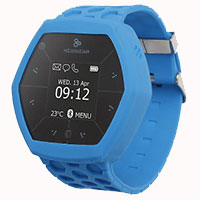Wearable Technology Device's Popularity Takes Off
Over the past few years the market for wearable technology has steadily grown and has shown no signs of slowing down. According to CCS Insight1, the wearables market could be worth $25 billion by 2019. Additionally, this same study revealed that smartwatches comprised 60% of the 2015 market value while over half of the wearable shipments were fitness trackers.
In addition to smartwatches and fitness trackers, wearable devices include wearable cameras along with augmented reality and virtual reality headsets. The proliferation of all of these devices is predicted to make inroads into the wearables market over the next few years.
The key to making wearable devices more attractive to consumers is to make their batteries operate as long as possible without requiring a recharge. You could have a product with the most state-of-the-art technology, but if you have to recharge it more than once a day, consumers will probably gravitate towards another product with a longer battery life for convenience.
 Maxim’s Wearable Products Components Overview
Maxim’s Wearable Products Components Overview
With this in mind, it is important that a wearable product’s battery life be prolonged to the maximum extent possible. This will give the product an advantage with those consumers looking for longer term usability over a product that may have more bells and whistles but require more frequent recharging.
One company that has designed a variety of components focused towards the wearables market is Maxim Integrated. They have put together a portfolio of devices that they claim offers the lowest power consumption and the smallest packages available (as of 9/27/2016). These components include power regulators (buck/boost/LDO), operational amplifiers, comparators, current sense amplifiers, voltage references, power monitoring ICs, temperature sensors, low-noise amplifiers (LNAs), analog-to-digital converters (ADCs), and digital-to-analog converters (DACs).
Let’s take a quick look at some of the components in Maxim’s wearable product portfolio and their qualifications:
- Power Regulators - High efficiency, low-noise switching devices and high-accuracy, low-noise LDOs
- Operational Amplifiers – High-speed, precise, low-noise, and low-voltage operation. The high precision and low-noise aspects of these Op Amps are ideal for driving high resolution ADCs
- Comparators – Low-cost and small size, these comparators have a wide range of propagation delay versus power options making them ideal for system monitoring or supply voltage checks
- Current Sense Amplifiers – These high-side and low-side current-sense amplifiers offer low input voltage and wide common mode voltage for accurate measurements over a wide dynamic range
- Voltage References – These shunt and series reference ICs offer low-noise operation, high initial accuracy and low drift over time and temperature, and are capable of driving high performance 24-/20-/18-/16-bit ADCs
- Power Monitoring ICs – ESD protection, low-power operation, and small packages
- ADCs – Broad selection of SAR and sigma-delta ADCs with high-resolution, fast data-rate, and low power
- DACs – Portfolio offers low-power operation, internal references, and buffered and unbuffered output devices
Along with their low-cost, low-power claims, Maxim also states that their parts offer optimized functionality and low quiescent currents, all of which make them ideal for increasing the battery life of small portable devices.
Maxim’s portfolio does offer many of the components necessary for the design of wearable products. Even if you choose to go with another manufacturer, this list of Maxim parts serves as a great reference for comparing parts available from other sources.
References:

Have questions or comments? Continue the conversation on TechForum, Digi-Key's online community and technical resource.
Visit TechForum








